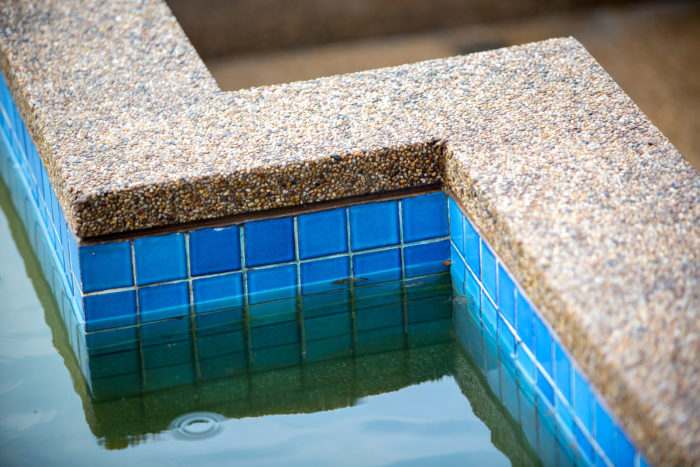
At Mt Lake Pool & Patio, we understand that no pool owner wants to deal with algae. It can be an unsightly and annoying problem to deal with. However, it is an unfortunate issue that many have to deal with. Below are some tips to help deal with the problem and get your pool looking its best. Look to us when you need help getting the algae or pool maintenance in Bucks County. We will be here for all of your pool needs.Symptoms of Algae in Pools
Even though pools do not have plants floating in them like lakes, they can still have an issue with algae. It can get into your pool in a few different ways, including from someone’s swimsuit or contamination on your pool floats. No matter how it gets introduced to your pool, it can be tough to maintain the water chemistry. Thankfully, the issue is more cosmetic. The three top types of algae in swimming pools are not harmful to people. Most likely, you will be dealing with slime that can discolor your pool. No one wants to jump into a pool that looks green or yellow.
Tips for Getting Rid of a Swimming Pool Algae Problem
1.Vacuuming
The best way to start getting your algae problem under control is to start vacuuming. If possible, manually vacuuming your pool is the best way because you can pay attention to areas that need it most. Additionally, the filter will not be picking up the algae and recirculating it back into your pool. This can contaminate your water once again.
2.Brush, Brush, Brush
Another great way to contain your algae problem is to brush your pool often. When you brush the pool walls, the sanitizer you use will be able to get in deeper to clean more algae off. It can also stir up any sediment to help it get filtered out and killed. Use a stiff pool brush to regularly brush the bottom and walls of your pool to keep algae from taking over. Get the tough spots first to keep water from getting cloudy.
3.Balance and Test Water
Another important pool care tip is to test the water to keep your pH and alkalinity in check. Keeping this maintained can ensure algae doesn’t have the right conditions to grow too fast that you cannot keep up. You can bring in a water sample for us to test at no charge.
4.Shock the Algae Away
If you have a resistant type of pool algae taking over, you may need to take a more aggressive treatment approach. A shock may be needed. This is done using liquid chlorine to help kill any types of green, yellow or black algae in your pool.

